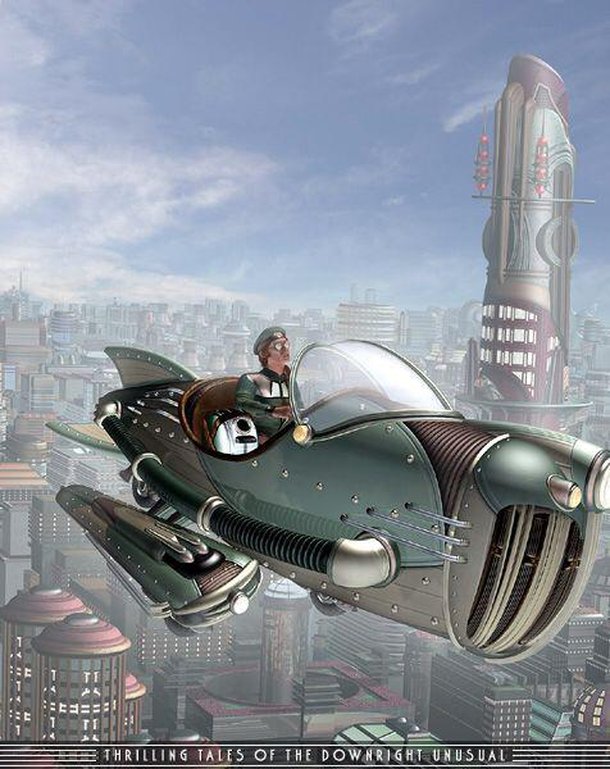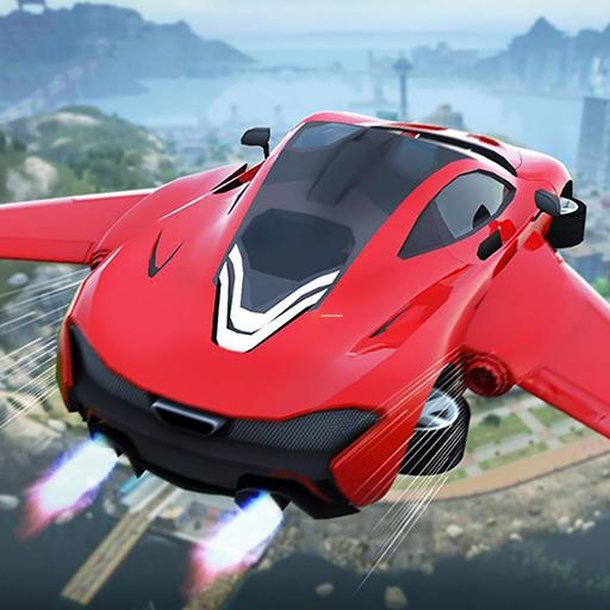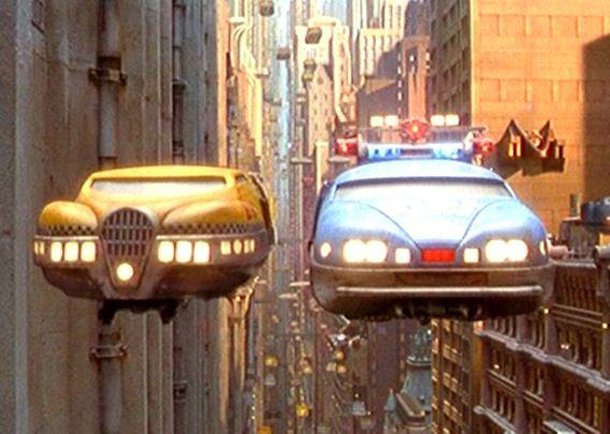Um dos elementos principais que compõem a tendência retrofuturista, em cidades em que o chão basicamente não existe mais, e as pessoas vivem em casas-cápsulas em prédios imensos no melhor estilo O Quinto Elemento –, são os carros voadores.
A obsessão por eles está diretamente associada a uma visão utópica do mundo – exatamente a proposta do retrofuturismo —, potencializada pelos inúmeros trabalhos de ficção científica produzidos ao longo dos anos, que enaltecem um futuro em que, espera-se, a pobreza, fome e doença serão assuntos ados.
Além disso, o tráfego e a locomoção se tornaram um dos principais motivos para que a indústria ficasse obcecada pela ideia de enviar os carros para o céu. Atualmente, segundo um estudo desenvolvido pela TomTom, o pior trânsito do mundo está em Moscou, na Rússia, acumulando uma taxa de congestionamento de 54%.
Uma realidade para poucos
 (Fonte: Pinterest/Reprodução)
(Fonte: Pinterest/Reprodução)
Conforme indicado pela Hedges Company, existem 1,446 bilhão de carros no mundo em 2022, sendo que os países empatados em relação ao maior número de veículos per capita são os Estados Unidos e a Nova Zelândia, onde ambos possuem cerca de 0,9 carro para cada pessoa.
Permanece a ideia de que carros voadores vão trazer mais qualidade de vida, evitando trânsitos intermináveis que arruínam o dia de uma pessoa, levando a maiores efeitos negativos em sua saúde emocional. Cinco pesquisadores da Universidade de Sharjah publicaram no periódico IOMC World um estudo sobre o impacto que o tráfego e muitas horas ao volante têm nas pessoas. Ele mostrou que o nervosismo aumenta em 74,2%; a agressividade em 52,2%; as dores de cabeça em 43,3%; tonturas em 28,8%; e o estresse em 80,4% dos casos.
Em teoria, ir com os automóveis para os céus diminuiria bastante esses fatores, mas, ainda assim, seria uma realidade para poucos, visto que voar continua sendo um privilégio. Na década de 1960, quando o voo comercial começou a se popularizar, os americanos ricos que viviam nos ares, viajando pelo mundo, foram chamados de “jet setters”, pois estampavam fotos em revistas e apareciam em reportagens mostrando como essa vida era boa.
 (Fonte: Amazon/Reprodução)
(Fonte: Amazon/Reprodução)
De qualquer forma, nada nunca impediu o homem de sonhar com o futuro dos carros voadores, tanto que, só nos EUA, existem quase 80 patentes registradas no Escritório de Patentes e Marcas Registradas para vários tipos de automóveis voadores.
A começar por Gleen Curtiss, em 1917, no caos da Primeira Guerra Mundial, considerado o “pai” do carro voador ao apresentar o primeiro veículo desse tipo com seu Autoplane. Feito de alumínio e com três asas de 12,2 metros cada, o motor do carro movimentava uma hélice traseira de quatro pás, mas que não foi o suficiente para fazer o carro realmente alçar voo, apenas dar alguns saltos curtos.
O problema dos carros
 (Fonte: Pinterest/Reprodução)
(Fonte: Pinterest/Reprodução)
Atualmente, existem alguns protótipos de carros voadores, como o LaBiche Aerospace FSC-1. Ele foi construído com o objetivo de que seus donos o dirijam como um carro esportivo de alto desempenho, atingindo velocidades de até 280 km/h, e que se transforme em um carro voador ao abrir as asas e a cauda em formato de V, transformando-o em uma aeronave que alcança até 450 km/h e cerca de 5 mil metros de altura.
Os avanços rápidos no setor de carros aéreos e seus números impressionantes trouxeram muitas perguntas dos órgãos reguladores e dos governos, como se a ideia de termos carros voadores é segura. As empresas estão há anos trabalhando arduamente para resolver os problemas do empreendimento, como falhas que podem acontecer durante um voo e como evitar que quedas de um carro causem mortes e destruição. A empresa chinesa Ehang já propôs equipar seu serviço de carros aéreos em Dubai com um paraquedas.
Além disso, a automatização do voo é o foco dos desenvolvedores, visando evitar erros humanos comuns, igual acontece na aviação civil, com uma quantidade imensa de redundâncias de sistemas para tornar a viagem cada vez mais segura. É por isso também que os carros serão menos complexos do que aeronaves comerciais, assim até mesmo a manutenção do veículo será mais prática e fácil.
Encarando o cenário dessa forma, fica mais claro que o uso de carros voadores é um processo difícil e lento, sobretudo em questão de infraestrutura e medidas que precisarão ser tomadas quando eles começarem a subir aos céus com frequência; sendo desenvolvidas diversas regulamentações, principalmente no que diz respeito ao controle do tráfego aéreo.
De acordo com Hugh Martin, da Lacuna Technologies, que ajuda cidades a criar políticas de transporte, é possível que até 2024 os carros voadores estejam comercialmente disponíveis. No entanto, existe uma diferença entre serem seguros para voar e quando isso poderá acontecer de fato.